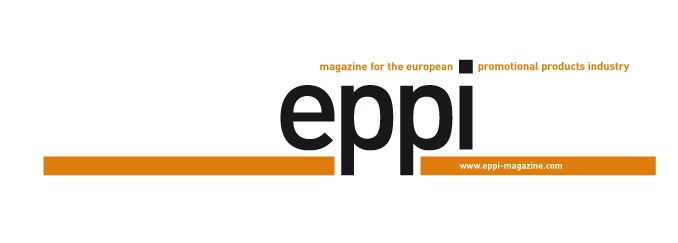Design, quality, service – these are the three principal guidelines according to which Ritzenhoff AG produces around 50 million glasses every year. From the draft, to the production and customising, through to the warehouse and delivery logistics, everything comes from one source. In addition to a refreshing advertising image, the customers thus also profit from flexibility and speed.
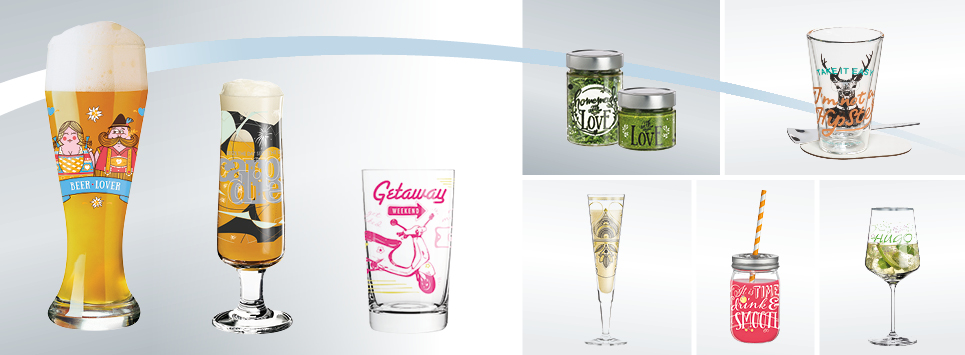
Even if a lot of people are not aware of it: Everyone has come into contact with Ritzenhoff glasses at one time or another. Because whether it is the big mineral springs, breweries or spirits distilleries, they all have their branded glasses produced by the family company in Marsberg – and thus contribute towards the fact that according to own accounts Ritzenhoff AG has been the market leader in the exclusive glass segment for years. In total, around 50 million tulip-shaped, goblets, tankards, champagne glasses, tumblers, shots glasses, beakers and water glasses leave the small German town each year. The second pillar of the AG is the worldwide sales of products to the specialised retail trade.
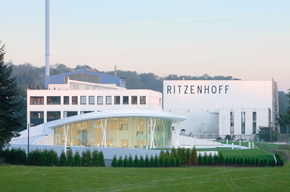
Room for ideas and their implementation: The headquarters of the family business in Marsberg, Germany.
As the third sales channel, the promotional products sector currently only makes up a small share of the overall volume – but according to Reinhard Spratte, the authorised signatory and Sales Director at Ritzenhoff, this is going to change soon. To this end one recently re-aligned the B2B sales concept and the company will be taking care of the marketing itself from now on. “We want to keep our ear closer to the market in future,” explained Spratte. For the Sales Director, exhibiting at different industry shows is part of the new concept and there is no doubt about the fact that glass is a “huge promotional product”: “Glasses are items used by the masses that everyone needs and which are as such very present in everyday life. However, we don’t just make any old glass, we produce an elegant promotional product that is an expression of the promoting company’s high esteem for the recipient.” The advertising occasions are as varied as the target groups may be – from beer experts and wine samplers, to Prosecco drinkers, through to coffee and tea lovers as well as gourmets – and Ritzenhoff products prove to be head-turners: “Beer exhibitions, anniversaries and summer festivals or onpack campaigns are just a few examples of where the customers rely on the traditional brand Ritzenhoff to convey their corporate messages,” said Spratte. The diversity of the line-up is just as varied as the target groups and the advertising occasions. Onsite designers make sure of that, who develop the shapes of the glasses, but also the 300 external designers around the world, who design decors for Ritzenhoff. “Our artists tell stories on the glass. The glass is the screen and the designers fill it with life,” underlined the PR Manager, Kerstin Hülsmann.
Based on this philosophy Ritzenhoff made the break-through in 1992. To be precise with a milk glass, where among others the white drink became part of the design of the cows hide. From then on the different decors attracted more and more attention and underlined the brand development and led to Ritzenhoff often being associated with a modern and fresh spirit – an image one wants to retain. “We work closely together with the beverage industry. As a result we find out about trends very early on, which we can then integrate into our line-ups fast,” said Spratte.
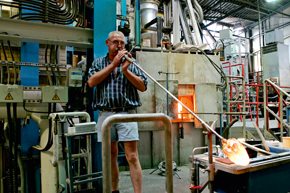
Even if the production has been fully automated since 1965, glass blowers still mouth blow oversized items and samples.
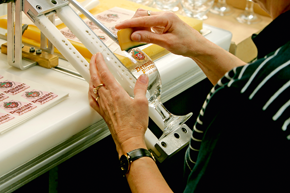
Transfers are attached to the glass by hand. The majority of the vessels are however customised with a screen print.
The phantasy of the customer is hardly set any limits when it comes down to deciding what the personal promotional messenger should look like. And that not only applies to the question as to whether it should rather be a smoothie glass, something for an aperitif or a champagne glass. Depending on the glass, the name of the promoting company or the slogan can be applied as a laser engraving or based on a pre-produced picture by hand or for instance also realised as a relief. The items can also be customised with a direct print in up to eight colours – if requested using ceramic or organic dye. Those “who want to go the whole hog” can opt for a golden edge, precious metal decoration or a self-designed symbol that is pressed into the stem. “Not possible, doesn’t exist” is ultimately the motto of the hightech glass company, where four production lines have been in operation since 2013. After the fullyautomatic production more or less completely replaced the hand-blown glass-making shop in 1965, three handmade glass makers still fulfil the special designs, small volumes and the production of samples.
All other orders are carried out by machines that were developed in-house for the special requirements and which can if necessary also be changed over within two hours. Flexibility is one of the outstanding features of the company: “We don’t outsource. Apart from the packaging everything comes from one source: From the draft, to the production and customising, through to the warehouse and delivery logistics. We have made very positive experiences here, because we can steer and control things better this way. We have short routes and our customers profit from the speed resulting therefrom,” emphasised Spratte. Talking about speed: Depending on what is required, it takes between one to four weeks for the order to be delivered. The production process is accordingly a hot affair. Quite literally indeed: The molten glass, a mixture between quartz sand, calcinated soda, chalk, potash and potassium saltpetre, is heated to approx. 1,500 ºC, before it is portioned into drops and blown into bubbles using compressed air. These are then pressed together with the stems and bases. Within minutes a high-quality crystal glass is made out of the glowing hot drops, which however depending on the type of glass are only allowed to cool down slowly over the following 70 to 90 minutes, so that they don’t shatter due to the tension. Subsequently the drinking edge is processed using the laser.
Quality assurance
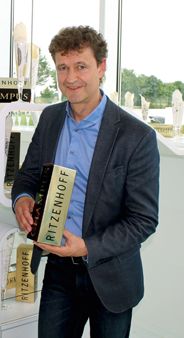
Reinhard Spratte, Sales Director at Ritzenhoff AG.
Fully-automatic production does not however mean that nobody is in sight in the production halls. On the contrary: Equipped with protective goggles and sturdy shoes, employees monitor the individual manufacturing processes. The blanks are still selected at the machine. A stem and base are only added to those glasses that withstand this critical examination. The employees don’t even miss what happens inside the melting tanks that are driven by natural gas, because a camera transmits images from the melting process onto the computer screen. “For the annual production we need 28,000 t of raw materials. We work 365 days a year because the liquid glass in the tanks is not allowed to cool down. Otherwise it turns into big lumps,” explained the Chairman of the Works Council Axel Ballez. He knows the secrets that ensure the glasses that leave the factory also display the usual Ritzenhoff quality: “Barium ist necessary for the polish and antimony for example so that no small bubbles occur. The secret lies in the mixture.”
The popularity of the products abroad also shows that Ritzenhoff has the right ingredients for success: There is high demand for the glasses in 60 countries worldwide; the export rate is 65%. Without continual investments this wouldn’t be possible: The family company that has around 430 employees has invested 70 mil. Euros alone over the past few years to make sure it has cutting edge technology. In the new warehouse that spans 10,000 m², around 31,000 palette storage places are available. In the finished products warehouse there are a further 6,000 and in the raw glass warehouse a further 7,000 places – important pre-requisites for carrying out the storage, commissioning and dispatch from the production location. In addition to accelerating the process, this is also environmentally-friendly, because trips to external warehouses or service providers fall away. “For the customers sustainability is becoming increasingly more important. Today, a growing number of companies ask where the products they implement come from. Made in Germany has thus developed into a kind of quality seal,” ascertained Spratte with satisfaction. In the face of all the challenges and obstacles that have to be overcome, in the view of its state-of-art technology, decade-long know-how, high-quality products that have the finger on the pulse of time and order processing from one source, Ritzenhoff can quite calmly look ahead to the future. After all, it certainly has crystal clear arguments.
// Rebecca Klug
photos: Rebecca Klug (3), Sabine Klüser (1), © WA Media, Ritzenhoff (11)


